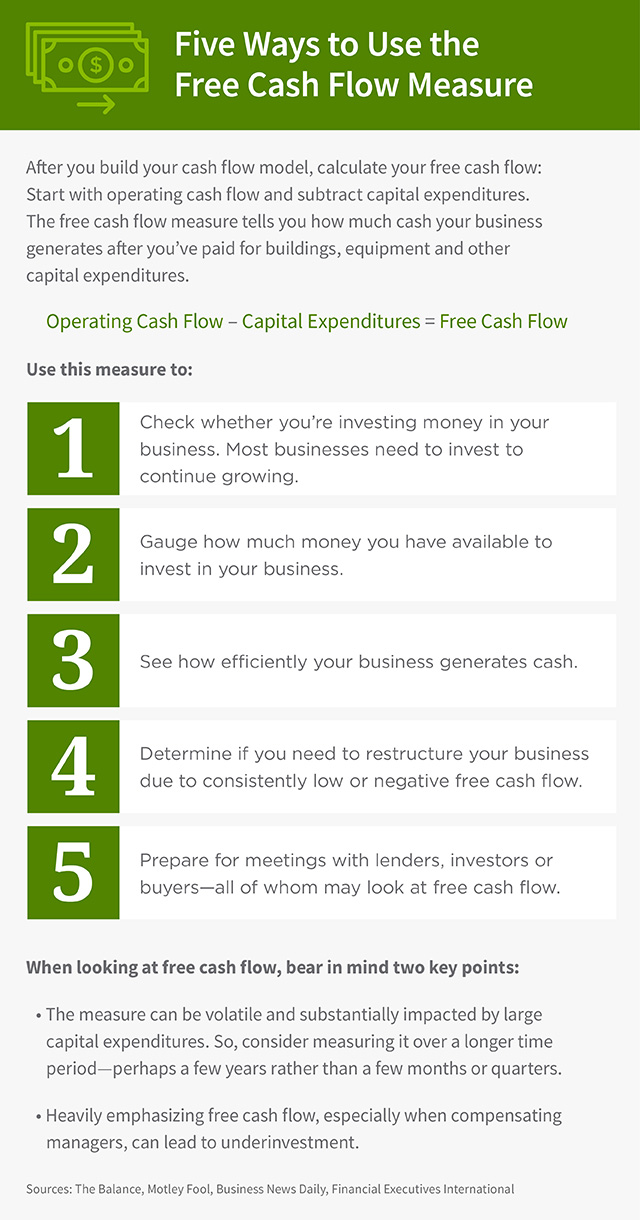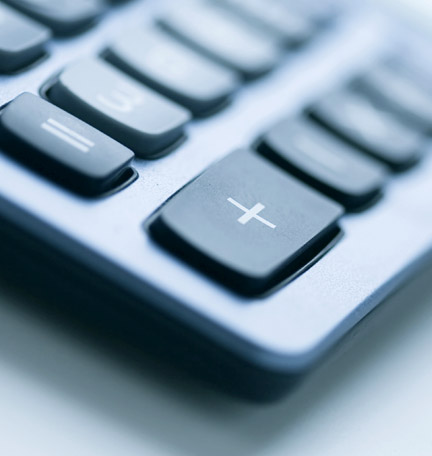Using Cash Flow Modeling for Better Business Decisions
Improve the health and the value of your business with this powerful process.
Cash flow is a simple measure of cash and cash equivalents moving into and out of a business. But when you layer on a clear understanding of those flows, with cash flow modeling, you can realize many benefits.
“Cash flow modeling enables you to strengthen your business, improve your ability to weather a downturn and make smart decisions about the future,” says Dan Eveloff, Treasury Management Executive at Regions Bank in Sarasota, Florida. “You can also use cash flow modeling to increase your chances of success with lenders, investors and buyers.”
Not only that, Eveloff notes, but optimizing a business’s cash can in many cases reduce the need to borrow for purposes that short-term credit often helps with, such as for inventory. “Focused management of cash—working capital—allows a business to better maximize capital already in the business,” he says.
What Is Cash Flow Modeling?
A model of your cash flow includes an analysis of your recent cash flows based on historical data and forecasts for the future. A cash flow model accounts for each source and use of cash across all three types of cash flows: those from operating activities, investing activities and financing activities. These activities include more than just revenue and expenses for your business and cover things like loan payments and personal infusions of cash into the company.
If you’re just getting started building a cash flow model, consider starting with the last 12 months of cash flows as well as projections for the next 12 months, bearing in mind that the exact time period you choose will depend on the business you’re in, how long your business has existed and your goals for the model.
You should also recognize cash flow—both in and out—in the time period it happens. For example, if you have to pay $2,400 every January for insurance, record that as a cash outflow in January rather than as a $200 monthly expense over the whole year. You will be able to see how much cash you need for operations—and when you need it.
Using Your Cash Flow Model
Once you’ve built your model, analyze what you find.
“When you understand your cash flows, you can identify what generates cash for your business and what might drain cash from your business,” says Eveloff.
You can also spot potential or future problems. For example, you may have a large payment due soon—that is, a big outflow of cash—but no commensurately large cash inflow. If the difference between the two is big enough, you could find yourself in a cash flow crunch where you’re unable to meet crucial obligations, like rent or payroll. You may then need a loan—fast—or have to face the prospect of shutting down.
“Even profitable businesses can face a cash flow crunch, and a thorough cash flow analysis can help you identify and prepare for one,” says Eveloff. “This is why it’s so important to recognize cash inflows and outflows as they occur when you construct your model.”
If you’re safe from a cash crunch and your business consistently shows positive cash flow, a cash flow model can help you deploy money more wisely. In the same way, your cash flow model can help you understand how much to save.
Once that’s done, you can consider other options for the extra cash, such as investing in expansion, conducting research and development, or rewarding your employees.

Cash Flow Forecasting: The Importance of Discounting
The forecasting element of your cash flow model will help you make forward-looking decisions, such as what to do with extra cash, but it’s crucial to discount the value of cash you’ll have in the future.
“An amount of money is worth more today than the same amount of money will be worth in the future, in part because of inflation and in part because of the opportunity cost,” says Eveloff. “Inflation reduces the purchasing power of money. We’ve all experienced that firsthand. The opportunity cost arises because you could invest the money in the interim and earn a return.”
Discounted cash flow accounts for the time value of money by converting future cash flows into present value. Discounted cash flow is key to evaluating how to deploy extra cash for your business. Imagine you run a restaurant and, after building up a sufficient emergency fund, still have cash left to invest. Should you expand your existing location? Add another location? Start a catering service? Each option will generate different discounted cash flows, which you can then compare to make an informed choice.
Cash flow modeling reveals the value of your business. Similarly, lenders, investors and potential buyers for your business will all look at discounted cash flow when determining the value of your business. If you want to borrow money, win investment dollars or sell your business, you need to know your discounted cash flow.
Popular spreadsheet programs make it easy to estimate discounted cash flows, but the results are only as good as the inputs. Selecting the right discount rate can be difficult without expert guidance. And discounted cash flow estimates typically include many time periods, so even a small estimation error can get multiplied many times and distort the results.
Getting Estimates Right Is Essential
“The higher your discounted cash flow, the more money you are likely to secure from a lender, an investor or a buyer,” says Eveloff. “But your numbers need to be accurate and stand up to scrutiny. Otherwise, you may get less funding or a lower valuation than you want or need.”
A Regions Relationship Manager or small business branch manager can guide you as you make these estimates to help improve their accuracy.
Three Things to Do
- Consider how cash flow management can help you grow your business.
- Review how technology can help improve your cash flow.
- Read our guide to cash flow for small businesses.






